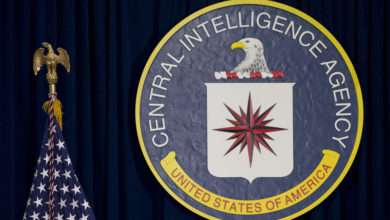How ONDC India Is Helping Small Retailers Reach Customers

When Jay Prakash, a 35-year-old shopkeeper, inherited his father’s local convenience store in Bengaluru, it had a dependable customer base streaming in from a wealthy apartment building known as the Diamond District. He sold food items such as rice, noodles, bread and snacks in his 400-square foot store, which earned him close to 15,000 rupees per daily. However, this was before the pandemic and most people stayed indoors. Now, he says, people are buying online through grocery services that promise extremely fast delivery times—20 minutes or less.
Prakash states that his daily earning have fallen by half. “The old customers who knew about the quality of the product still buy from us, but it’s not the same.” For high school dropout Prakash, it didn’t seem possible to open an online store to compete. A website design, marketing and running a delivery service felt overwhelming.
A new Indian initiative has brought hope back to his business after two decades. The Indian government has developed a solution to allow all types of sellers to show their products on shopping apps. This will help create an equal playing field between online and offline buyers and lessen the influence of American Big Tech. It’s called the Open Network for Digital Commerce, or ONDC. The system will allow offline retailers to compete with larger online retailers—including the many rapid grocery delivery services that have sprung up in the last year. Customers will be able to open their favorite shopping app (as long as it’s integrated with the ONDC) and find products from all sellers who are part of the ONDC. This would also include local stores.
Pilots are being conducted for groceries and food but the ONDC protocol is expected to eventually be applied for commerce and all services. Reports claim that Google and Amazon are discussing joining the ONDC protocol. This would allow customers to open the Amazon app to purchase products from all sellers registered under the ONDC.

One of the ONDC’s seller dashboards.
A unique solution for a fundamental problem
This is a unique solution in a world where online companies and Big Tech are taking over. A federal government has created a protocol that brings all types of sellers together under one roof. Prior to this, the Indian government built a payment protocol—United Payments Interface—which allows real-time inter-bank transfer through smartphone apps, bringing online payment capability to everyone, including offline merchants. The potential for scale when technology tools for merchants are built by the government was evident in the processing of nearly 6 billion UPI payments. UPI can now be used even in other countries than India.
“This [ONDC] is being done to address the fundamental problem of a platform-centric model leading to market concentration which is recognized world over,” said T. Koshy, chief executive officer of ONDC. “We have found a smart solution which is participatory, fair, inclusive and democratic.”
It plans to connect 30 million sellers to ONDC, and to expand the network to 100 Indian cities. According to industry experts, online commerce is disrupting the sector and will take part in some of the existing businesses. However, ONDC is set to change the business model. “The creation of the ONDC is definitely going to redefine the whole segment,” said Kumar Rajagopalan, CEO of the Retailers Association of India. “Indians go online for the discovery phase of shopping, and if the customer’s trusted shop owner is online, then they will just switch over.”

Delivery workers from Swiggy using mobile phones to deliver in Amritsar (India) on March 28, 2020
Narinder Nanu—AFP/Getty Images
Small retailers need help
Indian mom-and-pop retail has suffered greatly from the rise in ecommerce, especially with Flipkart owned by Walmart and Amazon. Indians used their smartphones to order groceries, and internet penetration increased. While this slowly chipped away at the businesses of local stores, it was the launch of the new category of instant grocery delivery—within 10 to 20 minutes— that further aggravated the situation. “These apps are giving discounts which we cannot afford,” said Uttam Kumar, a shopkeeper in Bangalore who saw his customer base dwindle from 800 to 200 a day. “I see that some of these apps have reduced the retail price and then given discounts on that as well.”
India has seen a rapid growth in instant grocery delivery markets. The market is worth $700 million and it was only a year old. By 2025, the estimated value of this market will be $5.5 billion. According to RedSeer, a local research firm and consultant, this would place it ahead China and Europe in terms of the adoption of these services. The ultra-fast delivery of groceries online has been a success in both the U.S. and Europe. It grew during the Pandemic, when most people were indoors. Glovo is headquartered in Spain; Gorillas are in Germany; Cajoo in France; Zapp in London; and Getir is in Turkey.
As in many other countries, India is seeing side effects from apps. There are more delivery drivers on the street (and at greater risk for accidents), and smaller shop owners who lose customers. But there is one thing that’s different in India: scale.
Online delivery offers unprecedented possibilities
With an average age of 29 and the second-highest population in the world, India has one of the youngest populations—with high levels of disposable income and no time to shop because of high-pressure jobs. This, along with an increase in middle-class Indians, means that more Indians use the increasing number of online delivery options available to them.
Keertana Rumalla is an Indian architect who orders groceries every day. She orders on Swiggy’s Instamart—a rapid grocery delivery service—and buys only the limited supplies she needs to make that day’s lunch. Also, she gets a Toblerone daily bar. “I am so dependent on the app right now. I work from home and don’t have the time to go grocery shopping,” Rumalla, 31, told TIME, just as she excused herself from the call to fetch her groceries for that day as the doorbell rang. “I am definitely addicted to using this app.”
Rumalla relies on many of these startups, which are backed in part by venture capital money from Western countries such as the Accel Partners-backed Swiggy Instamart and Zepto-backed Y Combinator, SoftBank-backed Blinkit, Dunzo-backed Google, Dunzo-backed Dunzo, Zepto-backed Zepto and Zepto-backed Zepto. India boasts around 10 of these services. Over $1 billion has been raised by these businesses to fund instant grocery delivery.
The ONDC protocol could help offline sellers compete against deep-pocketed startups. Koshy believes that ONDC can help sellers succeed based on what they offer and their specialization, not the size that venture capital money allows.
Prakash placed his first ONDC order on May 14th: Instant noodles and Coffee. He has received only four orders through the portal since then. But, he’s optimistic about the impending change, remembering the benefits of the government payment system, UPI. “When the government introduced UPI, I slowly understood the benefits of using that service,” Prakash says. “With ONDC, I am hopeful that it will bring my business back to how it used to be before the pandemic.”
Here are more must-read stories from TIME





